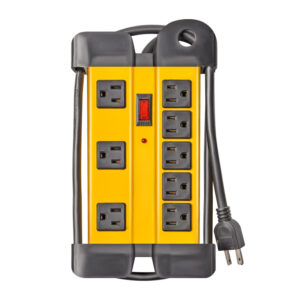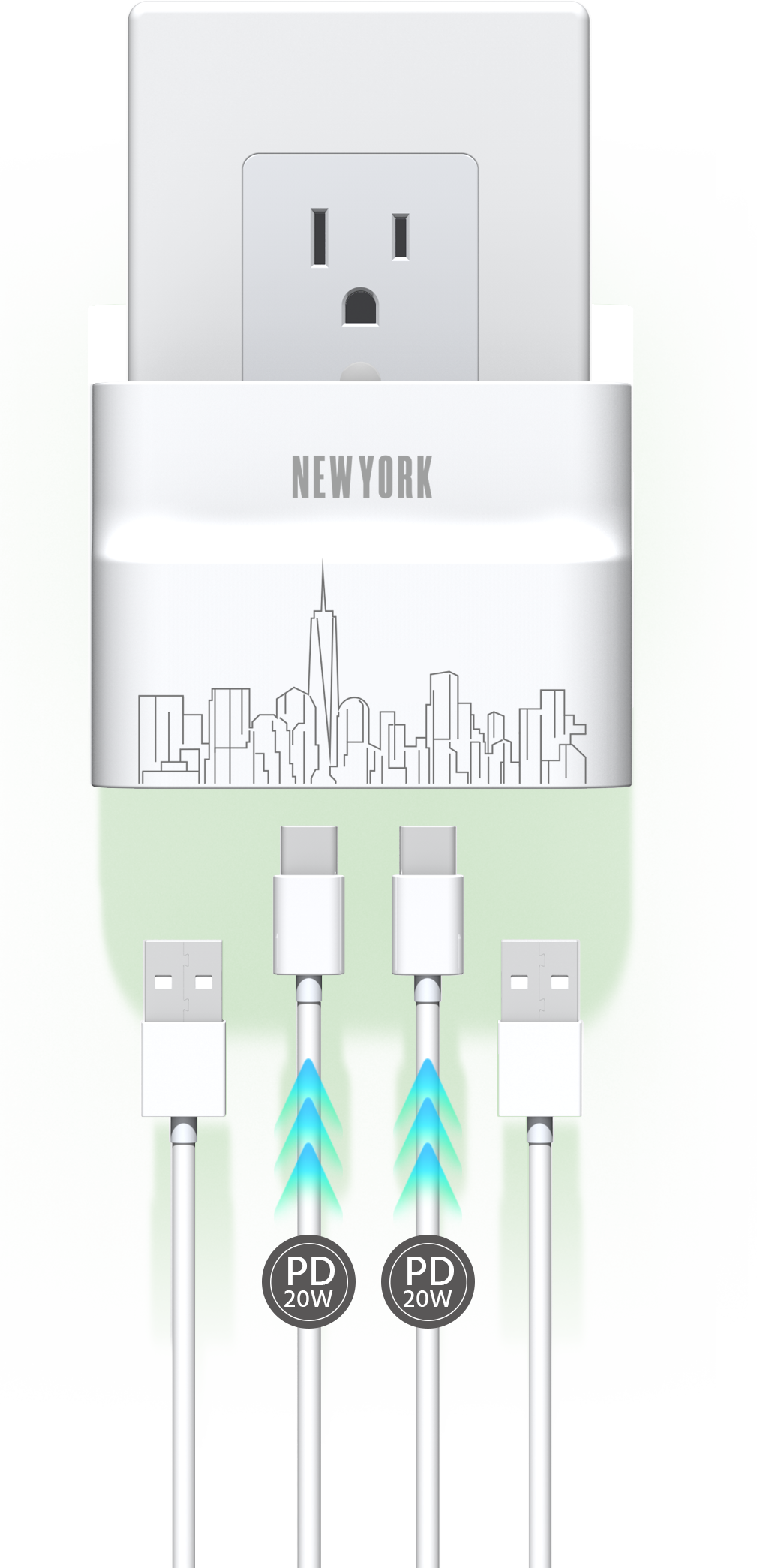Power safety is crucial whether you're at home, in the office, or outdoors. Choosing the right power strip means matching the product to your environment for optimal performance and safety.
Discover the key differences between indoor and outdoor power strips, and learn which one suits your environment for safe and efficient power management.
Let’s dive into the details of indoor and outdoor power strips and find out which best fits your needs.
What Are Indoor Power Strips and Their Key Features?
Indoor power strips are designed for controlled, sheltered environments such as homes, offices, and schools. They focus on functionality, style, and safety while maintaining a compact form factor.
Indoor power strips emphasize aesthetics, safety, and ease of use.
Indoor power strips provide multiple outlets, surge protection, and USB charging with sleek designs suited for controlled environments.
Indoor power strips are engineered to work optimally under standard indoor conditions. Typically, these power strips are equipped with surge protection and overload safeguards, ensuring that your sensitive electronics are shielded from power spikes and short circuits. They often come with additional features like integrated USB ports to reduce the need for separate chargers. The design of indoor power strips tends to prioritize aesthetics—a slim profile, appealing finishes, and discreet mounting options are common.
During my years of experience in product development, I noticed that indoor users highly value the balance between functionality and visual appeal. Products are often designed with a focus on clean lines and modern color schemes to blend seamlessly into home offices or living rooms. Moreover, indoor power strips usually feature a flat design to minimize space consumption, making them ideal for crowded environments like dorm rooms or corporate desks.
Safety is a primary concern with indoor units, so manufacturers incorporate multiple protective features, such as thermal shutdown mechanisms and built-in circuit breakers. These features ensure that in the event of an overload, the power strip will automatically cut off the electrical supply, thereby protecting both the device and the user. Furthermore, many indoor power strips are UL-, ETL-, or CE-certified, offering additional peace of mind.
Given these characteristics, indoor power strips are ideal for scenarios where aesthetics, ease of use, and reliable performance in a controlled environment are paramount. Whether you’re powering a computer setup, entertainment center, or office equipment, indoor models offer the versatility and safety features necessary for everyday use.
What Are Outdoor Power Strips and Their Key Features?
Outdoor power strips are designed to perform under challenging conditions. They must be robust, weather-resistant, and capable of handling higher power demands, particularly for use in garages, workshops, gardens, and other exposed areas.
Leading paragraph: Outdoor power strips are built for durability and weather resistance.
Outdoor power strips offer rugged designs with protective features for moisture, dust, and extreme temperatures to ensure safe outdoor use.
Dive-Deeper paragraph:
Outdoor power strips differ from their indoor counterparts in several essential ways. First and foremost, they are engineered to withstand harsh environmental conditions. This means they feature robust, weatherproof housings that protect against moisture, dust, and even UV exposure. Outdoor models typically have enhanced insulation and sealing mechanisms to ensure that water or debris does not compromise their function.
These power strips often include heavy-duty components designed to handle higher currents safely, making them ideal for powering tools, lighting, and equipment in workshops and construction sites. Additionally, the design tends to be bulkier to accommodate extra protection, including rugged casings and reinforced plugs. It is common to see outdoor power strips with additional protective features such as water-resistant gaskets and sealed outlets that conform to standards like NEMA 3R, which are specifically meant for outdoor or damp environments.
From my observations, outdoor users frequently report the importance of reliability and resilience. Power strips exposed to the elements must be built to last, and the extra cost is often justified by the significant reduction in failure rates and maintenance. Many outdoor power strips also incorporate surge protection, ensuring that unpredictable weather-related surges or lightning strikes do not damage connected devices.
In comparison to indoor units, outdoor power strips might sacrifice some sleek aesthetics for superior durability. They are typically mounted in areas where appearance is secondary to performance, such as on workbenches or outdoor utility shelters. Understanding the distinct demands of outdoor applications is crucial when selecting a power strip to ensure both safety and functionality.
How to Choose the Right Power Strip for Your Environment
Selecting between indoor and outdoor power strips involves understanding your specific needs and the environment where the device will be used. Factors like exposure to moisture, temperature variations, and physical wear can dictate the ideal choice.
The key to selecting a power strip is matching design to environment.
Choose indoor power strips for controlled spaces and outdoor models for rugged, weatherproof performance.
When choosing a power strip, carefully assess the setting where it will be used. For indoor use, consider power strips that offer a balance of aesthetics and safety. Look for models with surge protection, compact design, and additional features such as USB charging ports that integrate seamlessly into modern home or office décor. The design should complement the space, whether mounted behind a TV stand or integrated into a desk setup.
For outdoor environments, durability is paramount. A power strip used outside must be designed to withstand exposure to water, dust, and temperature extremes. Look for features such as a waterproof or weather-resistant casing, sealed outlets, and robust construction that can handle physical impacts. In many cases, outdoor power strips are tested to meet higher standards of durability, such as NEMA ratings specifically designed for outdoor use (e.g., NEMA 3R or NEMA 4). It’s also wise to consider power strips with heavy-duty circuit breakers and surge protection to safeguard against unexpected electrical surges from environmental factors.
Additionally, consider your long-term needs. If you require a versatile solution, some manufacturers offer hybrid power strips that, while primarily designed for indoor use, come with enhanced durability features that permit limited outdoor usage. Reading user reviews and consulting with electrical experts can also help in making a well-informed decision.
Understanding these factors will empower you to select a power strip that not only meets your technical requirements but also offers the best balance of safety, functionality, and design for your specific environment.
Conclusion
Choosing between indoor and outdoor power strips is crucial for safety and performance. Select the model that matches your environment's conditions and enjoy a secure, efficient power supply with our authentic product.












